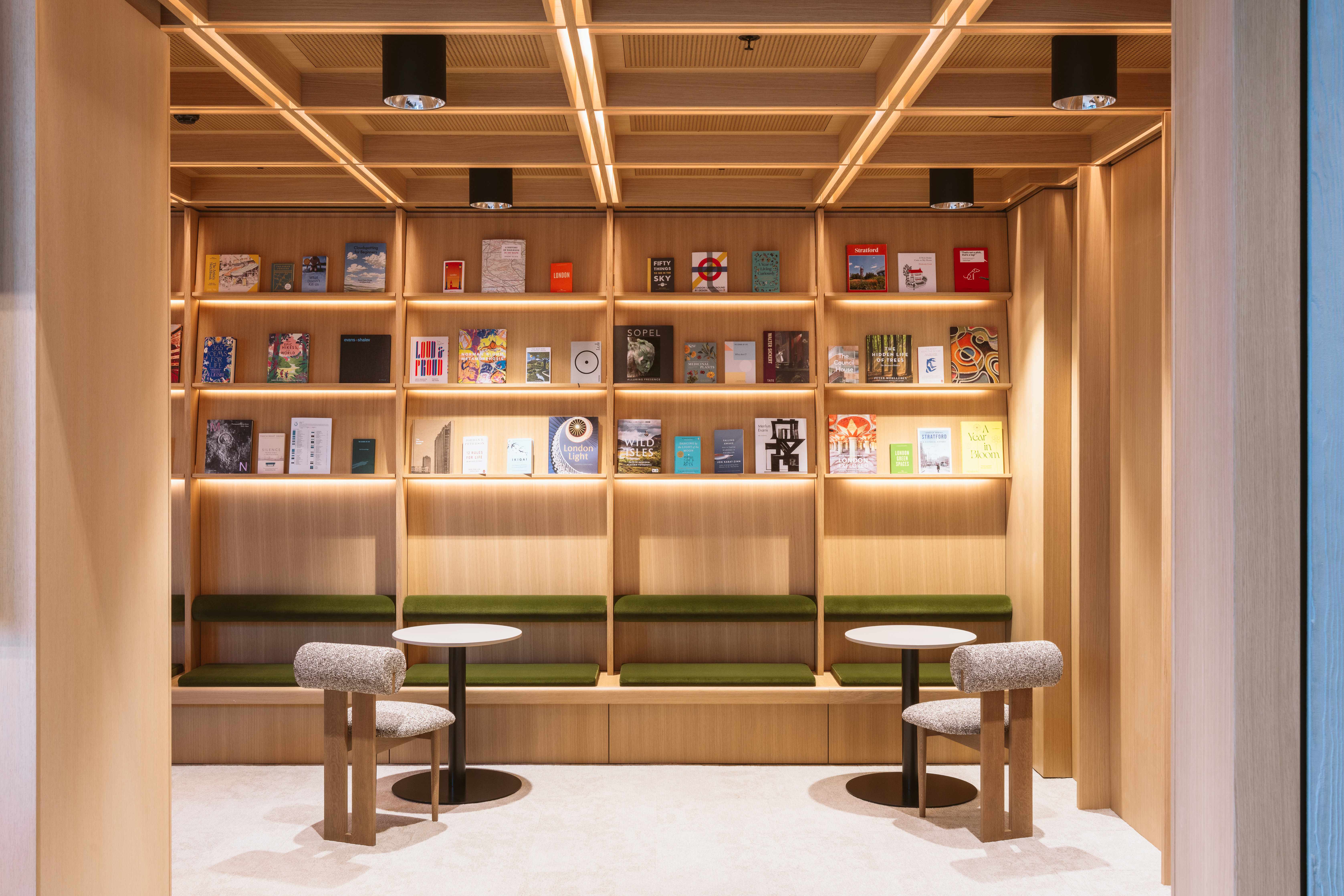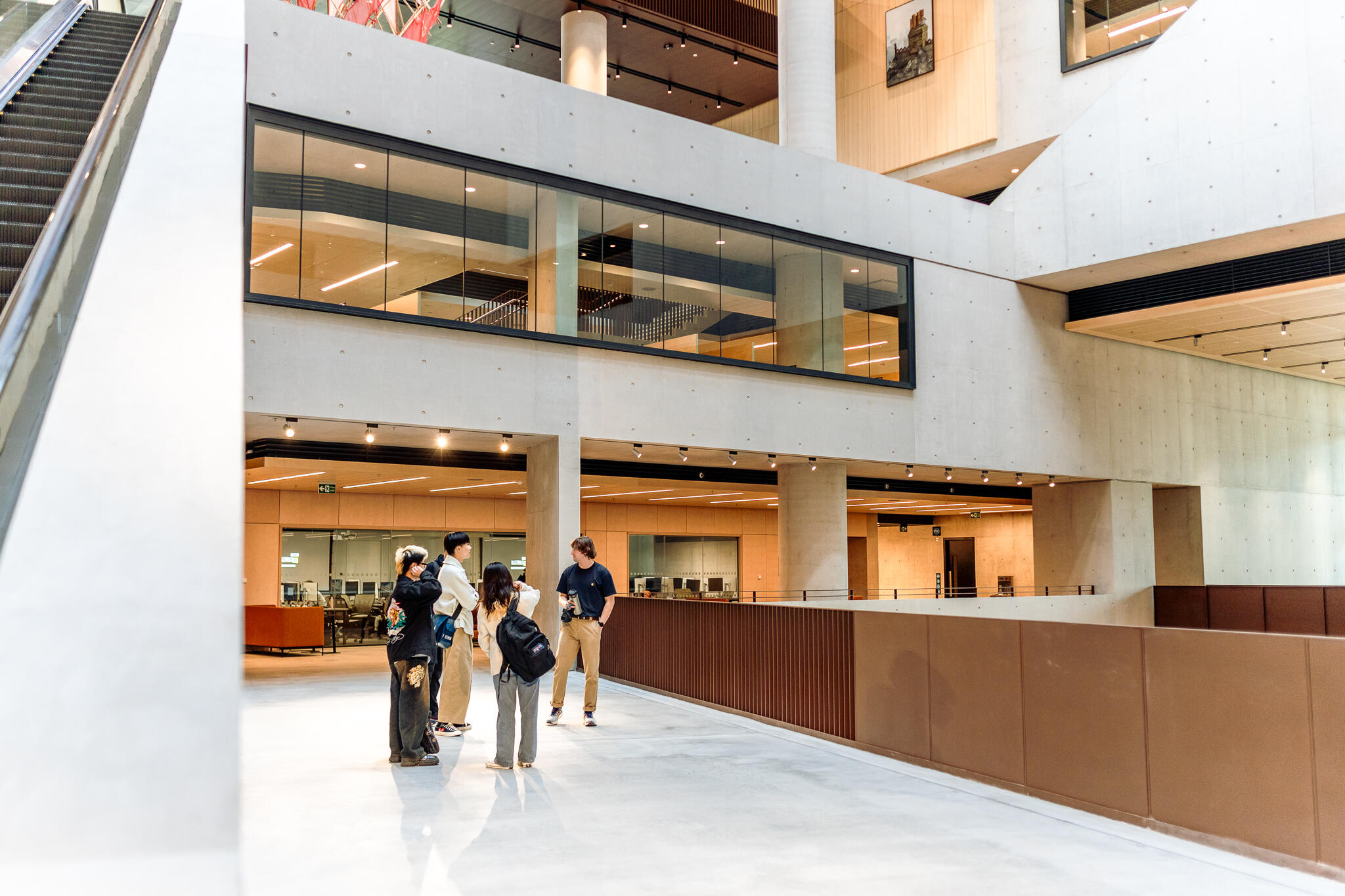Universities and higher education are on the move with Stratford a prime destination.
London consistently ranks as the world’s best place to study, however, for universities and colleges seeking to meet rising demand, city centre expansion options are limited. Solutions are being found though, particularly in Stratford’s exciting new higher education cluster.
- 20 Apr 2024
Widely recognised as one of the world’s leading centres for education, London has one of the largest concentrations of higher education institutions and universities globally, with citing around 40 university institutions alone. Traditionally, these have mostly been Central London based, however, there has increasingly been movement away from the centre, with Stratford in East London becoming a particular hotspot for culture and education, thanks to the massive regeneration, innovation, and strong connectivity of this area.
London also has one of the largest student populations of any world city and it’s growing. According to Higher Education Statistics Agency (HESA), London had over 500,000 students in the 2021/22 academic year, a 23% increase over five years. Despite Brexit, international student numbers coming to the UK have risen faster than home grown students, with HESA reporting overseas enrollments over the same five-year period rising by 49%. A significant part of this increase was driven by postgraduate degree demand. Oxford University’s Migration Observatory analysis of HESA data shows international student numbers, starting a master’s or postgraduate course, were up 77% between 2018/19 to 2021/22.
Why are international students so attracted to further education colleges in London? Seemingly, they are drawn by the quality of the education, vibrant lifestyle, safety, and UK’s reputation as a global cultural, business and finance centre. Proof of this is London taking first place in the Quacquarelli Symonds (QS) world rankings for Best Student Cities for the fifth year running. Mastersdegree.net also ranks London as the number one city for post graduate students in 2024, it’s student popularity score being more than double the next ranked city.
With demand for places from overseas students expected by UCAS to reach 1 million by 2030, and with London certain to be at the heart of this growth, maintaining the success of the city as an educational centre of excellence is vital.
This is particularly important as the Russell Group estimates that the “costs of delivering high-quality education and impactful research are not being met by funding from UK tuition fees and government grant” and universities now face a £2,500 shortfall per year for each UK student.
There are interesting ramifications to London’s appeal, one of which is that many UK regional universities want to expand their footprint into London to capitalise on those seeking education there. According to Savills, 13 regional universities took space in London from the start of 2020 to May 2023, many of which were not in central locations. These included Sheffield Hallam with 115,000 sq ft at Brent Cross, Teesside University’s 26,000 sq ft at Here East, Stratford and LMA - also at Here East - expanding their original footprint to 100,000 sq ft.
Another key trend is driven by London universities, who are themselves looking to expand and improve the educational opportunities that they offer to keep them ahead, satisfy demand and continue to attract both home grown and overseas students.
Many London based universities such as UCL, Kings and Imperial, are in central locations dating back to their 19th and early 20th century origins. Often with older buildings located in highly built-up areas, opportunities to expand and create modern facilities fit for new types of courses, have been hard to achieve.
Even if space is available in Central London, real estate costs for establishing campuses and new student accommodation, for either locally based or incomer universities, are extremely high. To be near their colleges, student housing has until recently been heavily located in Westminster, Chelsea, Islington, and Kensington with students paying some of the most expensive rents in the UK.
Some of the largest, most prestigious London universities have been tackling these issues by finding new locations where they can spread their wings. Imperial College was an early adopter with its 23-acre White City campus, a “platform for innovation and entrepreneurship” that is attracting tech and other specialist companies who want to be located near to them.
Attracting more overseas students than any other UK university, UCL - The Times and Sunday Times university of the year 2024 - had also set its sights on keeping ahead through growth. In 2023 they officially opened their UCL East campus, bringing world class facilities to another important regeneration site, this time in Stratford. According to UCL East Operations lead, Helen Fisher, UCL was attracted to Stratford as it gave them “space to grow and to do the kinds of activities that are quite difficult in a very central London location”. And as London’s youngest borough they valued Stratford as a location with “a dynamic young population”.
The move puts them both at the heart of the SHIFT innovation district, a catalyst for innovators in East London, and into a unique ecosystem of business, education, and cultural institutions moving into East Bank, including the V&A and Sadlers Wells.
With space to grow, following the area’s regeneration pre-and-post Olympics, Stratford has now become a rapidly growing higher education hotspot. As one of London’s best-connected places with two tubes, DLR, Elizabeth, and National Rail lines, and easily accessible to airports for international students, other educational institutions have joined UCL in opening state of the art faculties easily reached by staff, students, and visitors.
There are now over 15,000 students studying for 300-degree courses - from data science, cyber security and artificial intelligence to creative media, games development and fashion design - across nine higher education institutions, including University of the Art’s London College of Fashion, LMA, Teeside and Loughborough universities. Many of their students can access lower cost accommodation opportunities with over 4,000 new student beds already in place and new planning applications submitted for more.
The ecosystem that higher education institutions who have moved here find themselves in is also truly exceptional with Queen Elizabeth’s Olympic Park’s (QEOP) growing education hub focusing on future skills needs and growth industries.
At Stratford’s East Bank, located within the QEOP, UCL East and the London College of Fashion, have made their home and they are doing things differently. For example, UCL East courses are all brand new, and set to cut across disciplines and focus on the world’s challenges bringing together AI and robotics, climate crisis challenges and lifescience. The LCF mission to make the most of the area’s emerging collaboration between the arts, learning and creativity will be amply fulfilled by being situated alongside one of the V&A East’s two new Stratford homes - a campus for creative excellence where makers, artists and designers can flourish. Also located here will be Sadler’s Wells, a hub for dance creativity, and the BBC’s new purpose-built state-of-the-art music recording and rehearsal studios and music education home. These academic and culture institutions are exploring opportunities to offer cross institutional education as well as opening the doors on community interaction and opportunity for local businesses.
With space to breathe, the place is also awash with retail and entertainment on tap, and world class sports facilities and leisure opportunities at QEOP meaning that faculty staff and students are finding Stratford a vibrant, exciting place to work and study in. Find out more
Interested in finding out more about the Stratford area, visit or download the Stratford Cross app and catch up with all things Stratford. The app is available on the App Store and the Google Play Store.
What's New

In conversation with AFK Studios: Architects of The Turing Building
Meet the visionary architects behind The Turing Building and discover how their innovative design is shaping modern, sustainable workplace experiences.

In conversation with AFK Studios: Architects of The Turing Building
Meet the visionary architects behind The Turing Building and discover how their innovative design is shaping modern, sustainable workplace experiences.

A Deep Dive into The Turing Building with Area's Latest Case Study
Learn about how this landmark office space was brought to life, embodying our commitment to innovative and sustainable urban environments.
